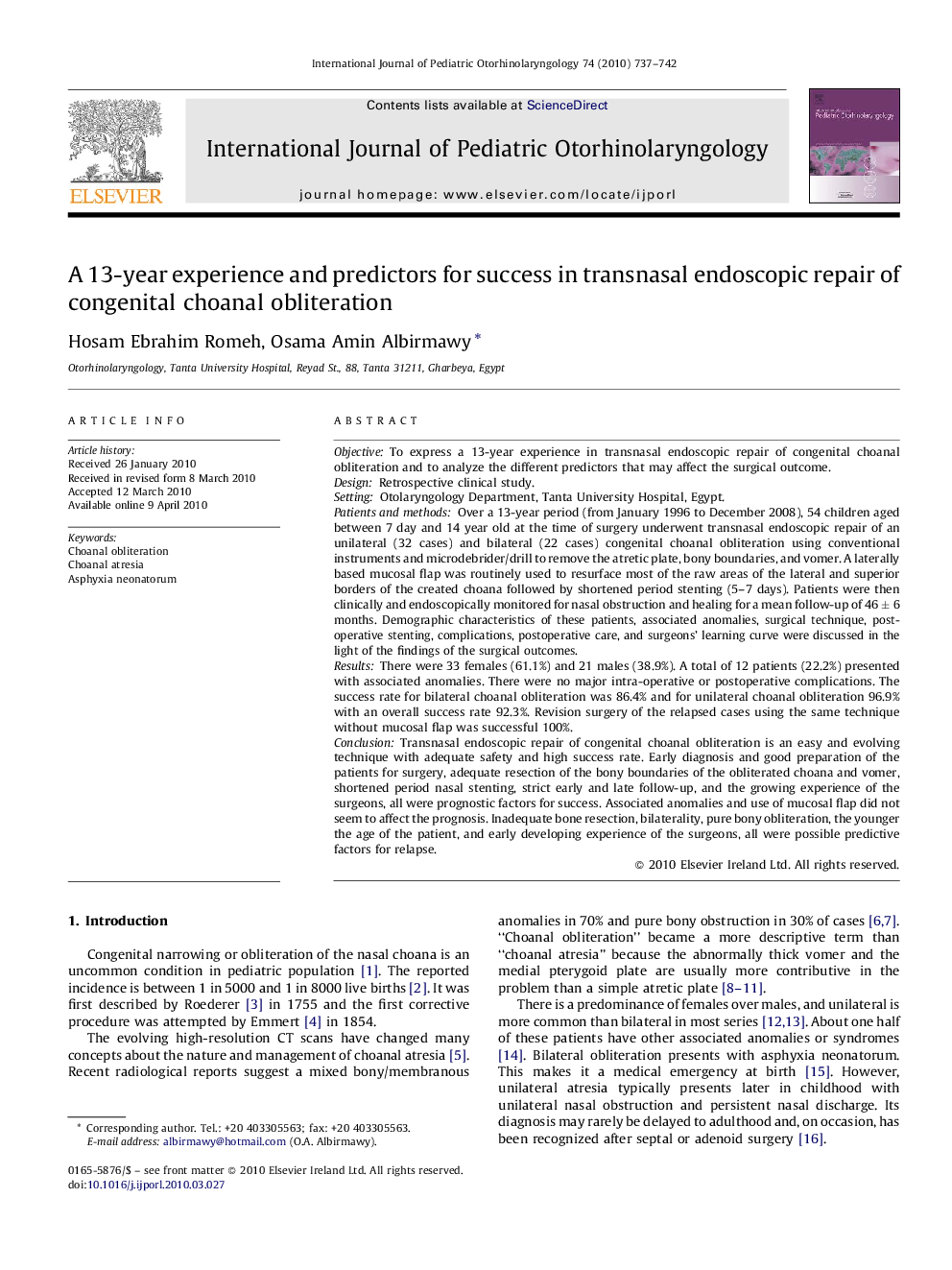| Article ID | Journal | Published Year | Pages | File Type |
|---|---|---|---|---|
| 4112840 | International Journal of Pediatric Otorhinolaryngology | 2010 | 6 Pages |
ObjectiveTo express a 13-year experience in transnasal endoscopic repair of congenital choanal obliteration and to analyze the different predictors that may affect the surgical outcome.DesignRetrospective clinical study.SettingOtolaryngology Department, Tanta University Hospital, Egypt.Patients and methodsOver a 13-year period (from January 1996 to December 2008), 54 children aged between 7 day and 14 year old at the time of surgery underwent transnasal endoscopic repair of an unilateral (32 cases) and bilateral (22 cases) congenital choanal obliteration using conventional instruments and microdebrider/drill to remove the atretic plate, bony boundaries, and vomer. A laterally based mucosal flap was routinely used to resurface most of the raw areas of the lateral and superior borders of the created choana followed by shortened period stenting (5–7 days). Patients were then clinically and endoscopically monitored for nasal obstruction and healing for a mean follow-up of 46 ± 6 months. Demographic characteristics of these patients, associated anomalies, surgical technique, postoperative stenting, complications, postoperative care, and surgeons’ learning curve were discussed in the light of the findings of the surgical outcomes.ResultsThere were 33 females (61.1%) and 21 males (38.9%). A total of 12 patients (22.2%) presented with associated anomalies. There were no major intra-operative or postoperative complications. The success rate for bilateral choanal obliteration was 86.4% and for unilateral choanal obliteration 96.9% with an overall success rate 92.3%. Revision surgery of the relapsed cases using the same technique without mucosal flap was successful 100%.ConclusionTransnasal endoscopic repair of congenital choanal obliteration is an easy and evolving technique with adequate safety and high success rate. Early diagnosis and good preparation of the patients for surgery, adequate resection of the bony boundaries of the obliterated choana and vomer, shortened period nasal stenting, strict early and late follow-up, and the growing experience of the surgeons, all were prognostic factors for success. Associated anomalies and use of mucosal flap did not seem to affect the prognosis. Inadequate bone resection, bilaterality, pure bony obliteration, the younger the age of the patient, and early developing experience of the surgeons, all were possible predictive factors for relapse.
